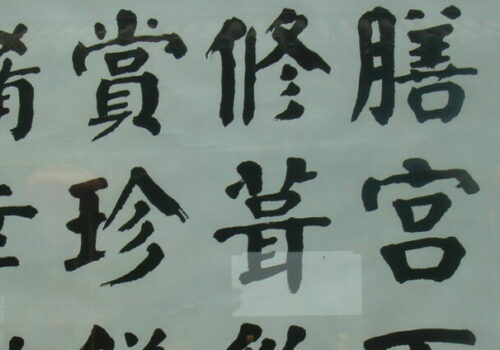 Working without stress and anxiety is not only good for your health, but also good for productivity. At Springest this is a focus area for both reasons:
Working without stress and anxiety is not only good for your health, but also good for productivity. At Springest this is a focus area for both reasons:
- You should have an empty ‘RAM’ i.e. a ‘working memory’, because you need this space to be able to focus and make optimal use of your creativity. Getting Things Done or GTD is a method that helps you stay focused and concentrated.
- It allows you to effectively plan and prioritise without losing your flexibility.
How does this method work and how does this translate into teams?
How can you and your organisation keep an ‘empty head’? Springest shares its learnings:
Getting Things Done is not a new method, but that doesn’t mean it’s any less useful. We all want overview and control in our work and our lives. GTD is the way to get your workflow systematically organised. It’s all about outcomes and actions. The essence is to get organised and focused. The way to do that with GTD is by consistently gathering and collecting all things that ask for your attention. As a result, you create peace of mind and you can reflect and be creative.
The questions to ask yourself with everything that comes up (i.e. ‘stuff’) are: what is the next action and what is the desired outcome? This way, you always make conscious choices to pick certain tasks or activities and leave others to rest, or pick those up at a later time.
Managing your inboxes
GTD is an art, like any art it needs consistent practice. It may sometimes be difficult to maintain, but there are some tips that might help you on your GTD mastery path.
Pro Tip 1 – Organise the place where you collect everything that requires your full attention. For example, Springest makes use of the tool Asana as the central team inbox. Whichever tool you decide to use, it should at least create a good overview and be browsable i.e. your team should be able to search and find things easily. Channel everything that pops into your mind to this place and limit the number of places where fresh ideas enter your world.
Pro Tip 2 – When you receive something new in your central inbox, immediately process it and decide what your next action will be. This ensures that nothing stays in your inbox unnecessarily, remember, not everything requires a next action. By deciding immediately, no future tasks will keep haunting your mind as something that needs to be processed. Nevertheless, when you do process something keep in mind the desired outcome. A certain amount of courage is needed when making a decision and prioritising your efforts, you are basically deciding on whether something deserves a place in your world or not. You need to decide whether you commit to a new “project” or action, and then come up with a realistic approach leading to the first required physical action.
Pro Tip 3 – If your organisation embraces this system, it will help to do a weekly review with someone else. Buddy up with one of your colleagues, sit down somewhere relaxed, and go through each others tasks. Doing it with someone else will challenge you and decisions, helping you to prioritise. This how you ensure the system remains reliable.
It all comes down to reliability: you need to be able to trust the system
For a system to succeeds it needs to be 100% reliable. This requires five overviews, which you can create in your inbox:
- an agenda (to help you decide on what to do on any given day),
- a list of “next actions”,
- a list of “waiting for” actions (actions that still need input and/or an action from another person),
- a list of outcome based projects,
- a “someday / maybe” list (where you can drop any creative idea you may want to take up later).
By using tags and icons you can easily group activities that belong together, allowing you to find them at a later time. This makes it possible for you to plan tasks based on a particular type of activity. For example: make some phone calls or answer emails. This can be done more efficiently all at once, rather than switching between different activities. The ‘weekly review’ and your daily run-through of the various lists makes the system unbreakable.
Do it live
Getting it done – you get to do what you intend to do without any stress. There is no need to plan way ahead, but you have to make concrete next actions that get you closer and closer to the desired results. If you need help to prioritise what you should be doing ask yourself the following questions:
- Where am I and what do I have with me (or what can I do?)
- How much time and how much energy I have?
- What has the most leverage if I’m going to do this?
This means that you have a focused workflow and starting point. Springest translates these purpose driven activities in teams with Holacracy – ‘Getting Teams Done’.
Getting Teams Done!
Holacracy is an agile management model for organisations. It distributes the responsibilities throughout the organisation, arranges short and lean meetings, and assumes a constant change in all the things that need to be done. Change is something that takes place continuously and naturally, which is a good thing, especially for those of us who live in the real world where we are presented with constant change.
Just like in GTD, Holacracy’s focal idea is that all the work that needs to be done for the organisation is mapped out and grouped into bite-size projects. The grouping of actions and projects is necessary for ‘role’ owners to fulfil their accountabilities. Holacracy also gives role owners the independence and autonomy to decide how and when they will conduct their roles.
Properly chosen roles will allow you to have everything under a solid good structure. New tasks should always fall under a role, if there is no role responsible for the task then you can create new roles during the governance meeting. The way Holacracy is presented is similar to the GTD process. You have a pile of “stuff” or “tensions” as Holacracy calls it, and something must be done with it. “Tensions” are situations where a change is desired. The ideal scenario is that you plan and execute it – simple. But before this can happen you need to make some clear decisions and create clarity. To make these decisions you need overview and control in order to remain flexible and productive. This symbiosis is at the core of GTD and Holacracy.


